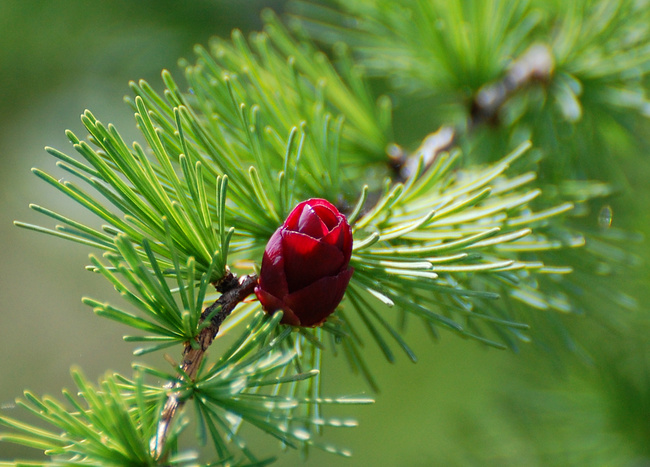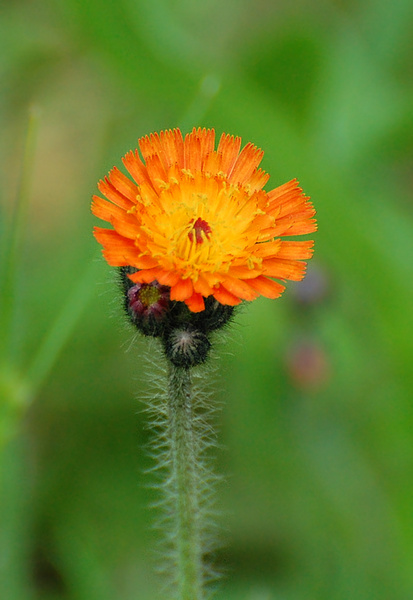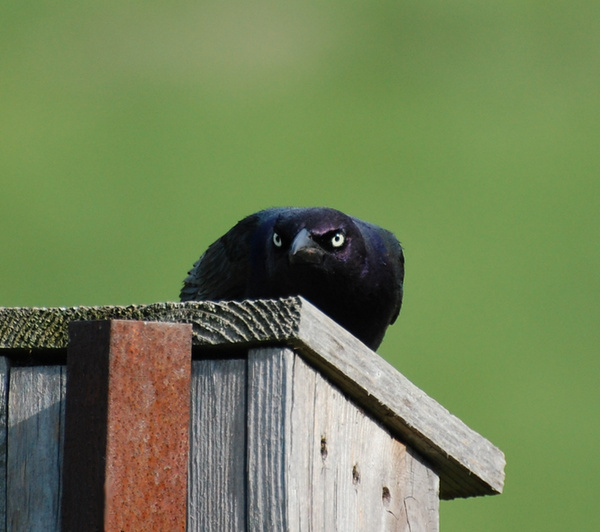
Back from Gaspé with a stop at the Biodome
June 30th, 2009
I've begun wading through my photos, and will start posting them, probably later today.
Our final stop was at the Biodome in Montreal, which made a fitting coup de grace to the vacation. I don't normally like zoos--I don't like seeing animals in cages--but this was different. Entire ecosystems had been recreated indoors. Lots of vegetation, most of which was real, except that the giant trunks in the rainforest area were, I think, stone. In these constructed habitats creatures flew, clambered and swam about in relative freedom. The areas were large and, in many cases, there was no barrier between us and the fauna! (For the lynx pair, however, there was a barrier...) If you've ever played the adventure game Syberia--the train station that had been made into a giant aviary?--that's what it reminded me of.
Lots of exotic birds in the tropical area, along with some small monkeys, a capybara, and some reptiles. There were several Northern Jacanas--pretty chestnut-colored shorebirds with very long toes for walking on lily pads--wading in a stream. A Roseate Spoonbill was perched in a tree. A very tame crested black bird (whose species name I forget, anyone?) was walking underfoot, near a sign that said "I know I'm friendly, but please don't touch me!" And numerous small, colorful songbirds flitted about in the canopy. Challenges were similar to those of real-life in-the-wild bird watching, since they had plenty of foliage to hide in and a wide area to range. Binoculars proved handy.
Much of what I saw I couldn't identify (except with the help of the descriptive plaques, where provided). But a few of the birds--e.g. the jacana and spoonbill--I recognized from my North America field guide, probably because their range just tipped into south Florida, or perhaps in some cases because the North American bird I thought I was seeing had a tropical close relative. Of course, for the purpose of my lifelist, it didn't really matter whether I could identify any of them or not. Birds in captivity are not countable, no matter how well-gilded the cage is!
The birds in the "Laurentian forest" were all species I'd seen, most of them many times, so I didn't linger there (although it was neat to see a Black-Crowned Night Heron so close up!) The "St. Lawrence marine" ecosystem, however, was my favorite part of the Biodome. Here I got to see, up close and personal, many of the seabirds that I had enjoyed on our trip to Gaspé, along with a wonderful assortment of diving ducks (possibly my favorite class of birds). There were Black Guillemots swimming and diving, two Razorbills standing on the rocks, Black-Legged Kittiwakes flying around. There were terns, probably Common Terns; there was a beautiful shorebird I recognized as a Ruddy Turnstone perched on a rock, as well as other shorebirds that I couldn't ID without my field guide.
Of diving ducks, there were: Common Eiders (my god the males are beautiful!), Barrow's Goldeneyes, Long-Tailed Ducks, Harlequin Ducks, Black Scoters, and Buffleheads. I've seen all but two of those (Harlequin, Scoter) before, but only from a distance. No barriers (I wonder if anyone ever gets blitzed by the terns?), and this whole area had a sunroof instead of artificial light. I would have brought my camera if I'd known.
Some of the male ducks appeared to be in or entering into eclipse already. Seemed a bit early to me, but being in captivity may alter the timetable.
The other part of this exhibit allowed us to see the same area underwater, where we were treated to the fascinating sight of underwater Black Guillemots. They dove straight to the bottom and swam around with their wings--a sort of "aquatic flying"--looking for food. But the really neat part was when they came back up. I don't know how they did it, but they actually zoomed up out of the water, like pudgy little torpedos. It happened so fast it was a blur. (Unfortunately, none of the diving ducks went under while I watched, so I didn't get a chance to compare their styles to the guillemots'.)
Finally, we came to fairly small arctic and antarctic sections, where there were Common Murres and King Eiders (arctic) and penguins (antarctic). Not sure why Common Murres were deemed arctic, mind you. There are tens of thousands of them on Bonaventure Island.
In sum: I can't recommend this place highly enough. And don't worry, the line-up is not as bad as it looks. I said a string of "oh my god"s as we tried to find our way to the end of the line, and braced myself for a two-hour wait, but the actual wait was little more than a half hour.
A solo hike up Mont Ste-Anne
June 27th, 2009
So I went walking alone up on Mont Ste-Anne yesterday afternoon. Yes, I know I said my body was worn out. It was. But the mist was lovely, and the woods were calling.
I discovered that there is in fact a way to get those songbirds out of hiding: annoy a robin. The path I was on seemed little used, overgrown in places, so perhaps that explains why the robin pair I encountered treated me as though I were some strange alien being instead of--as robins usually do with humans--ignoring me. They both started making alarm calls, and followed me around squawking incessantly for the next fifteen minutes.
If you followed the hyperlink on "pish" in my last post, you learned that to "pish" is to imitate the sound that birds (particularly chickadees) make when they discover a predator, and want to call together a mixed-species mob of birds to harass it. (Specifically, this is for land predators or perched raptors. A raptor in flight provokes a very different alarm call, one that means "stay in hiding and don't move a muscle.") Pishing is thus a way of tricking birds into coming out in the open. Well, no one pishes as expertly as an actual bird! As the robins hopped around fussing, every songbird in the area popped out of the foliage to see what was going on. One of them was a beautiful male Black-Throated Blue Warbler. Not a lifer, but a pleasure.
Later down the trail I also spotted a Golden-Crowned Kinglet and several Nashville Warblers. In all, three last-minute additions to my "Gaspé list", and three birds that I had never before seen in their breeding habitat.
Last day in Gaspé
June 26th, 2009
This is our last day here. And we're taking it easy: we've worn out our bodies with hiking, and the planned second boat trip to photograph the cliffs of Bonaventure was cancelled on account of heavy mist.
I haven't racked up as many lifers (new species) as I expected. But some of the lifers have, so to speak, extra large check marks next to them. The diversity of seabirds is small, but what there is, there's a lot of! As for songbirds, I have heard an impressive diversity of them, but seen comparatively few. It turns out spruce trees are hell for bird-watching. They're the perfect camouflage.
The first boat trip to Bonaventure was a rousing success. We got to see the extraordinary panorama of 30,000+ breeding pairs of Northern Gannets, some nestled into the crevices of the cliff and viewable only by boat, others nesting on top and visible from land. Common Murres also nest in colonies on the cliff (but not on top). The two species are in some areas tightly intermingled, but peacably coexist, more or less ignoring each other.
The gannets atop the cliff are cordoned off (by conservation authorities). Their crowded colony extends to the very edge of the cordons, and individuals occasionally duck under and wander a short distance to gather nesting material. They show no fear of humans, even as close as five feet away. Needless to say, the photographic opportunities were excellent.
The day before yesterday, we went whale-watching. Got several brief looks at Minke whales, and numerous excellent looks at a female humpback whale with calf! About the only thing she didn't do is actually breach for us. Mike also got our first good, reasonably close-up photo of a Common Murre. Unlike Black Guillemots and Razorbills (their relatives), they never show up close to the pier, so open ocean from a boat is the best bet.
Yesterday was more hiking at Forillon National Park, this time on the "graves" trail, a path that goes along the rocky coast of the tip of Gaspé peninsula. This vies with Mont Ste-Anne as the best time I've had here. The scenery was magnificent. Birdwise, I managed to pish a few Magnolia Warblers out of hiding (I can see them back home, but seldom), and enjoyed the song of Swainson's Thrushes that has been a constant accompaniment to our hikes up mountains and along cliffs. We saw numerous Black Guillemots, swimming and nesting, and I also scored a lifer: Common Eider, a large, stately sea duck. It's the biggest diving duck in North America, and also the most oceanic. Most of the "sea ducks" only really go to sea in the winter; eiders stay there all year long. I glimpsed four of the black and white males in flight, and we also found several families of females (mottled brown) with young on the water.
While walking alone through a grassy area, I paused, drank some water, sneezed--and heard a rustle in the grass beside me. I looked over and saw a porcupine no more than three feet away from me. I moved on. And speaking of animals one does not want to meet, we got an awesome view of a black bear. It's the first time either of us had ever seen a bear in the wild. He was sitting on what looked like a rather precarious perch, on a grassy ledge some distance down, overlooking the sea. We wondered if he had designs on the nearby eider ducklings.
I doubted he'd be able to reach us anytime soon. But Mike wasn't so sure, so when the bear moved, we did too.
Mid-vacation update
June 21st, 2009
We explored some woods in Forillon National Park yesterday. Lots of exotic bird songs, but very hard to spot any of the singers (save for a lifer Boreal Chickadee, briefly seen but conclusively identified.) Plus, we forgot the bug spray, which resulted in a premature end to our expedition.
Today we drove partway up Mont Ste-Anne, located right behind the B&B, then hiked the few kilometers the rest of the way to the top. It was an awesome hike: beautiful scenery, stratospheric lookouts, some interesting birds (Magnolia Warbler, Black-Throated Green Warbler, a heard-but-not-seen Swainson's Thrush), and a cool refreshing mist swirling everywhere, hugging us, revealing scenery and then hiding it a moment later.
By the time we got back down to Percé the clouds and fog had departed, and sea birds were beginning to cluster around the pier. I went down and took ten spabillion pictures of my beloved, magnificent Northern Gannets, as well as a few of cormorants, razorbills, guillemots and kittiwakes. As soon as weather permits we're going to visit the breeding colonies on Bonaventure Island. (The gannets' eggs haven't hatched yet, I'm told, but they're due soon.) Another day will be devoted to whale-watching, and still another to more exploration of Forillon National Park.
Here in Percé
June 20th, 2009
Well, we're here.
And here's how I feel about it:
Wow.
Wowwow.
Oh. my. god.
*dies* *goes to heaven*
That is all.
Okay, I guess that doesn't have to be all. It's a rainy day--I have time. I'm writing from a public-access computer here at the B&B. Ruby-throated Hummingbirds are at feeders outside the window right in front of me.
We arrived in Percé (after a stay at a very charming, homey little B&B called "Le Metayer" in Riviere-du-Loup) early yesterday evening. After dropping our stuff off at the Gite Le Presbytere, we walked five minutes down to the pier to look at some seabirds I had spotted on the way in. From a distance, they just looked like gulls. They were not just gulls.
There were Northern Gannets--magnificent, majestic birds, dwarfing the gulls by comparison, white bodies, black wings, orangeish faces, silver spear-shaped bills--torpedoing into the water for fish. They actually spiral a bit when they dive, and the effect when a whole flock of them dive one after the other is mesmerizing. There were Black-Legged Kittiwakes: small, buoyant, chattery oceanic gulls who dive like terns. There were Great Cormorants and Razorbills. And swimming right next to the pier, a Black Guillemot. His bright red feet kicked up with a splash each time he dove under to look for food.
Five lifers, just like that. A sixth lifer occurred yesterday in Riviere-du-Loup when I enjoyed (and photographed) the sight of Bobolinks in a dandelion field. And a seventh happened barely out of Ottawa, in Rockland, in the form of an Eastern Meadowlark.
The B&B here is very nice. Dinner (at a restaurant recommended by our host) was to die for, breakfast was to die for. Now I just need the sun to come back!
Gaspé
June 15th, 2009
Our vacation to Gaspé Peninsula is just about set.
We're leaving on Thursday, spending the night in Riviere-du-Loup, and arriving in Percé the following day. The B&B in Percé is called "Gîte Le Presbytère." It's set in an old presbytery, specifically a former home for itinerant priests. It has several (all) positive reviews on TripAdvisor. I look forward to it and to the other B&Bs we'll be staying at, particular the breakfast part. French Canadians know how to do breakfast right!
The major attraction in Percé is an offshore island called Bonaventure. It's basically one big bird sanctuary, boasting the following breeding sea birds:
- The biggest colony of Northern Gannets in the world. Over one hundred thousand of them. These are huge (goose-sized) sea birds related to boobies. They do spectacular dives for fish and have intricate courtship rituals which, apparently, they will happily perform in the presence of human spectators.
- Auks, of various species: the north-hemisphere analogue to penguins. Unlike penguins, they can fly, albeit not too well.
- Atlantic Puffins - the "parrots of the sea"
- Leach's Storm-Petrels - these birds, like other tubenoses, have the ability to drink salt water and expel the salt.
- Great Cormorants - relatives to our familiar Double-Crested Cormorants, who are also present.
- Black-Legged Kittiwakes
We plan to do some whale-watching too, and some hiking inland at Forillon National Park, where there may be bear and moose and, if we're lucky, lynx sightings.
I'm bringing five memory cards and intend to fill them. In the meantime, here's a few spring leftovers that I didn't get around to posting before.

Common Grackle

Female Downy Woodpecker

Flowers don't fly away
June 12th, 2009
Spring migration is over. Birds have settled into their breeding territories. They're no longer congregating in easily accessible migratory hotspots. They're singing, nesting and foraging away in their individual habitats of choice. Those who prefer to stay stratospherically high in the canopy, do so. Those who prefer to stay hidden in six layers of foliage, do so.
Bird photography has been absolute unrelenting frustration.
On that note, I bring you these pretty plants.

A baby conifer cone--tamarack, I think. Photographed at Mer Bleue bog.

Devil's Paintbrush
Rock Pigeon courtship
June 7th, 2009

1680x1050 wallpaper
A male Rock Pigeon courts a prospective mate by poofing out his iridescent throat feathers.
Apparently I'm some kind of nut
June 4th, 2009
I went down to Old Quarry Trail in Kanata early yesterday morning, in search of a warbler that I know breeds there: Common Yellowthroat.
Common Yellowthroats are beautiful little birds with bright yellow throats and black, domino-shaped patches around their eyes. They're bashful skulkers of marshes and wet meadows. It's easy to hear Yellowthroats singing--a loud, cheerful "witchety witchety witchety" that can go on for hours--but hard to get one to actually come out into the open.
I found a male in a wet grassy patch of land, hopping around in trees and bushes and singing. Since he's what I came for, I gamely waded my way into the grass after him...
And spent nearly an hour trying to photograph that damn bird. It went the way it usually does. As soon as I startled him (which didn't take much), he darted away, then about fifteen seconds later, I heard "witchety witchety witchety" emanating from some other thick shrubbery or (if I was lucky) a small tree. Follow, startle, repeat. And so we both went around in circles, me snapping shots anytime he showed his face.
The grass was very tall and very wet. My jeans and sneakers both soaked through to the skin in 8C. And when all was said and done, I had not a single picture that I'm willing to share: nothing that is not of such poor quality that it would be downright libelous to post it. No. Common Yellowthroats deserve better. Even if they do drive me crazy.
I will be trying again.
And your little dog too
May 29th, 2009

Common Grackles continue to amuse me.
|
